
Hienghene: New Caledonia's Hidden Gem
Discover Hienghene in New Caledonia: A blend of natural beauty and rich Kanak culture, perfect for adventure and relaxation.
Hienghene, located on the northeastern coast of New Caledonia's main island, is a paradise for nature lovers and adventure seekers. Known for its breathtaking landscapes, Hienghene is home to towering limestone cliffs, lush rainforests, and pristine beaches. The famous 'Lindéralique Rocks' are a must-see, with their unique shapes and striking beauty. The area is rich in Kanak culture, offering visitors a chance to experience traditional village life, local crafts, and vibrant cultural festivals. Don't miss the opportunity to visit the local markets where you can find handmade souvenirs and taste delicious traditional cuisine. For those who enjoy outdoor activities, Hienghene offers a range of options including hiking, kayaking, and snorkeling. The clear waters of Hienghene Bay are perfect for underwater exploration, teeming with colorful marine life. Whether you're exploring the land or the sea, Hienghene promises an unforgettable adventure.
Local tips in Hienghene
- Visit the Lindéralique Rocks early in the morning for the best light and fewer crowds.
- Bring cash as some local markets and smaller establishments may not accept credit cards.
- If planning to hike, wear sturdy shoes and bring plenty of water.
- Learn a few basic phrases in French as it is widely spoken and can help you navigate local interactions.
- Check the local festival calendar to experience Kanak cultural events during your visit.
Hienghene: New Caledonia's Hidden Gem
Hienghene, located on the northeastern coast of New Caledonia's main island, is a paradise for nature lovers and adventure seekers. Known for its breathtaking landscapes, Hienghene is home to towering limestone cliffs, lush rainforests, and pristine beaches. The famous 'Lindéralique Rocks' are a must-see, with their unique shapes and striking beauty. The area is rich in Kanak culture, offering visitors a chance to experience traditional village life, local crafts, and vibrant cultural festivals. Don't miss the opportunity to visit the local markets where you can find handmade souvenirs and taste delicious traditional cuisine. For those who enjoy outdoor activities, Hienghene offers a range of options including hiking, kayaking, and snorkeling. The clear waters of Hienghene Bay are perfect for underwater exploration, teeming with colorful marine life. Whether you're exploring the land or the sea, Hienghene promises an unforgettable adventure.
When is the best time to go to Hienghene?
Iconic landmarks you can’t miss
Place des Cocotiers
Discover the beauty and culture of New Caledonia at Place des Cocotiers in Nouméa, a charming park perfect for relaxation and exploration.

Amédée Lighthouse
Experience the breathtaking Amédée Lighthouse, a historical gem in New Caledonia offering stunning views and vibrant marine life.

Koulnoué Village
Experience the idyllic Koulnoué Village, a tropical resort in New Caledonia, where relaxation meets adventure amidst stunning landscapes.

Fort Teremba
Experience the charm of Fort Teremba, a historical landmark in New Caledonia, where colonial history meets stunning landscapes.

Ka Waboana Lodge
Experience the tranquility and beauty of New Caledonia at Ka Waboana Lodge, your serene escape in Hienghene.

Ouaième Ferry
Experience the breathtaking beauty of Ouaième Ferry in New Caledonia, connecting you to stunning islands and unforgettable adventures in the South Pacific.
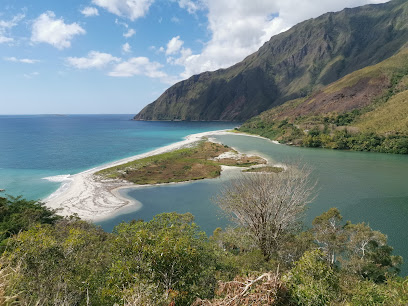
Grande Terre
Experience Grande Terre: A breathtaking island in New Caledonia, offering stunning beaches, vibrant culture, and endless adventure for every traveler.
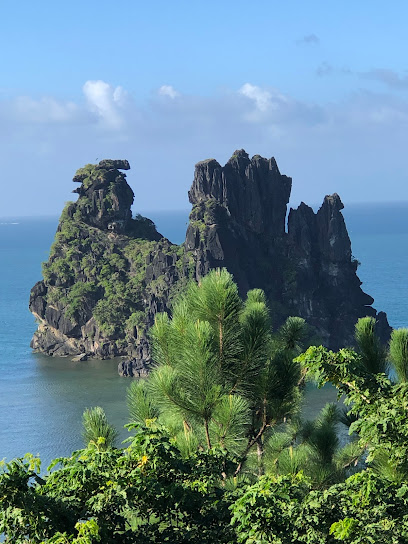
Château Hagen
Explore the rich cultural heritage of New Caledonia at Château Hagen, a captivating center showcasing Kanak traditions and colonial history amidst beautiful gardens.

Cascade de Colnett
Discover the breathtaking beauty of Cascade de Colnett, a stunning waterfall in New Caledonia, surrounded by lush landscapes and vibrant wildlife.

Poule couveuse de Hienghène
Experience the breathtaking beauty of Poule couveuse de Hienghène, a serene nature preserve in New Caledonia with stunning landscapes and diverse wildlife.

Notre Dame Du Pacifique
Explore the tranquil Notre Dame Du Pacifique in Nouméa, a stunning cathedral offering breathtaking ocean views and a serene atmosphere for reflection.

Office de Tourisme de Hienghène
Experience the heart of New Caledonia at the Office de Tourisme de Hienghène, guiding you to the island's stunning landscapes and rich culture.

Gîte Houlo-Mene
Discover tranquility at Gîte Houlo-Mene, a perfect lodging in New Caledonia surrounded by nature and rich culture.

Site historique de l'Ile Nou
Uncover the fascinating history of New Caledonia at Site Historique de l'Ile Nou, a must-visit for culture enthusiasts.

Îlot Tibarama
Discover the beauty of Îlot Tibarama, a tranquil island paradise in New Caledonia, perfect for relaxation and snorkeling adventures.

Unmissable attractions to see
Randonnée Cascade de Tao
Explore Randonnée Cascade de Tao - a stunning hiking area in New Caledonia with breathtaking waterfalls and lush landscapes perfect for nature lovers.

Bonhomme de Bourail (rock formation)
Discover Bonhomme de Bourail, New Caledonia's iconic rock formation, surrounded by stunning landscapes and rich cultural heritage.

Cascade de Colnett
Discover the natural beauty of Cascade de Colnett, a stunning waterfall in New Caledonia, perfect for nature lovers and adventure seekers alike.

Ecomusée du café de Voh
Explore the Ecomusée du Café de Voh, where the rich history of coffee cultivation in New Caledonia meets a cozy café experience.

Poule couveuse de Hienghène
Experience the tranquility and ecological richness of Poule Couveuse de Hienghène, a nature preserve that showcases New Caledonia's stunning biodiversity.
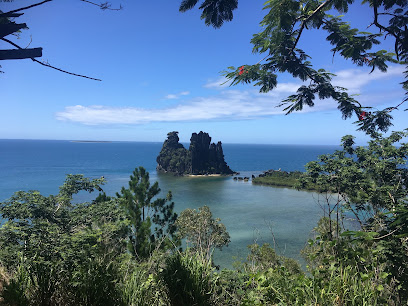
Plage de Gatope
Explore the serene beauty of Plage de Gatope in New Caledonia, a tranquil beach paradise perfect for relaxation and adventure.

Hibisair
Discover the thrill of flight and breathtaking views at Hibisair, New Caledonia's premier aerial sports center and tourist attraction.

Vertical Lagon Poé
Discover stunning turquoise waters and thrilling adventures at Vertical Lagon Poé, a top tourist attraction in New Caledonia.

Cascade de Ba
Experience the breathtaking beauty of Cascade de Ba, a stunning waterfall surrounded by lush greenery in New Caledonia's natural paradise.
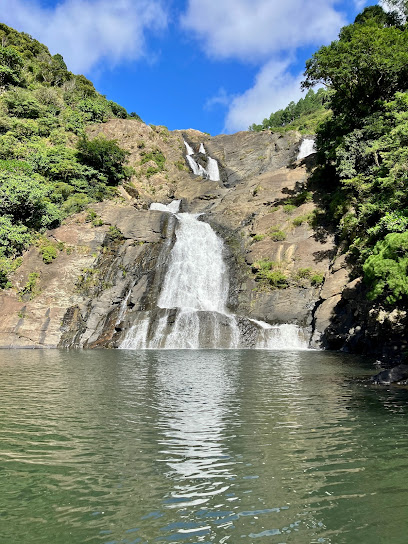
Point de vue
Explore the stunning landscapes of Koumac at Point de Vue, a breathtaking viewpoint showcasing the natural beauty of New Caledonia.

Passion Lagon
Immerse yourself in the tropical paradise of Passion Lagon, a stunning lagoon destination in New Caledonia, perfect for relaxation and adventure.

Observatoire du Marais Fournier
Discover the serene beauty of Observatoire du Marais Fournier, a premier bird watching haven in New Caledonia, perfect for nature enthusiasts.
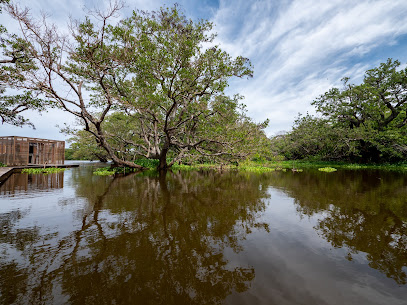
Atelier sculpture du bois
Discover the captivating artistry of local wood sculptures at Atelier Sculpture du Bois in Pindache, New Caledonia, a treasure trove for art lovers.

Col d'Amos
Discover the serene beauty and breathtaking views at Col d'Amos, a must-visit tourist attraction in New Caledonia's stunning landscapes.

Cascade de Ny
Visit the stunning Cascade de Ny in Bourail, New Caledonia, where lush landscapes and breathtaking waterfalls create a perfect escape for nature lovers.

Markets, malls and hidden boutiques
Vap'store Koné
Explore Vap'store Koné in Kone, New Caledonia, the ultimate destination for vaporizers, accessories, and local vaping culture.

PRIMAG VOH SARL
Discover local flavors and unique ingredients at Primag Voh Sarl, a charming grocery store in New Caledonia, perfect for culinary exploration.

Marché de Hienghène
Discover the vibrant culture and flavors at Marché de Hienghène, a must-visit market in New Caledonia offering local produce and unique crafts.

MAGASIN BLANCHER
Explore Magasin Blancher, New Caledonia's vibrant grocery store offering local produce, artisanal goods, and a taste of authentic island life.

Boutique La Vie en Rose
Discover unique fashion at Boutique La Vie en Rose, a charming clothing store in Kone, New Caledonia, blending local craftsmanship with contemporary style.

MAGASIN AOUTEEPA
Explore local flavors and engage with the community at MAGASIN AOUTEEPA, a must-visit grocery store in Ponerihouen, New Caledonia.

La Kasba Exotic
Discover unique fashion pieces and accessories at La Kasba Exotic, a charming clothing store in Koumac, New Caledonia, reflecting the region's vibrant culture.

Poawe Alimentation
Discover local flavors and vibrant community spirit at Poawe Alimentation, a must-visit grocery store in New Caledonia.

Le Petit Cagou
Discover unique baby clothing, toys, and more at Le Petit Cagou, a charming store in Koné, New Caledonia, perfect for families and souvenirs.

Friperie Koné vêtements d'occasion
Explore sustainable fashion at Friperie Koné in Koné, New Caledonia - your destination for unique second-hand women's clothing.
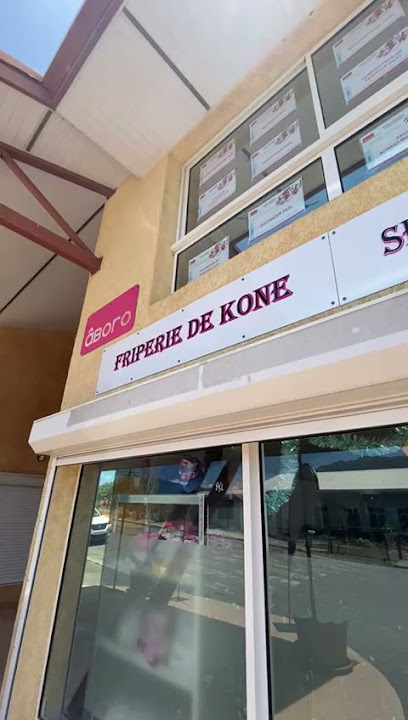
Fenua shopping
Explore Fenua Shopping in New Caledonia for unique gifts and local crafts that celebrate the island's rich culture and artistry.

MAGASIN L'ESCALE
Explore MAGASIN L'ESCALE in Touho, New Caledonia, for unique local crafts and a taste of vibrant island culture.

Mahina Perles
Explore the exquisite craftsmanship of Mahina Perles in Bourail, New Caledonia - a must-visit jewelry store for unique treasures.

7 à 6
Experience the vibrant flavors of New Caledonia at 7 à 6, where local produce and artisanal delights await your discovery.

Factory Store
Explore the Factory Store in New Caledonia for an unforgettable shopping experience with trendy clothing and unbeatable prices.
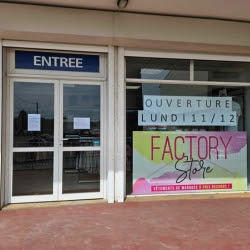
Essential bars & hidden hideouts
La Bodega del Mar
Savor the vibrant tastes of New Caledonia at La Bodega del Mar, a lively tapas bar offering an unforgettable dining experience by the sea.

Hôtel Restaurant Hibiscus Koné
Experience the perfect blend of relaxation and adventure at Hôtel Restaurant Hibiscus in the heart of New Caledonia's stunning landscapes.
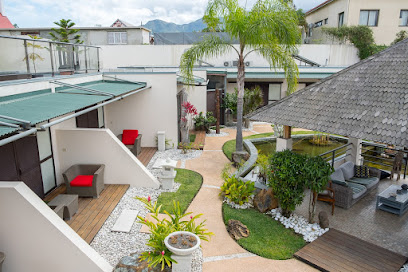
Chai de l'Hippodrome
Discover the finest wines and exquisite cuisine at Chai de l'Hippodrome in Nouméa, a must-visit destination for every traveler.

LA GUINCHE
Experience the lively blend of dining, nightlife, and stunning views at La Guinché in Nouméa's scenic Baie des Citrons.

L'Alizee Snack and Bar
Discover the flavors of New Caledonia at L'Alizee Snack and Bar, where every bite is accompanied by stunning views of Poe Beach.

L'Etrave
Experience the vibrant atmosphere and stunning views at L'Etrave, the premier bar destination in Nouméa, New Caledonia.

Q20
Experience the essence of Nouméa at Q20, where exquisite wines meet delicious tapas in a vibrant atmosphere.

L’Endroit Rooftop
Experience the vibrant nightlife of Nouméa at L’Endroit Rooftop, where stunning views and expertly crafted cocktails create unforgettable moments.

Poule couveuse de Hienghène
Explore the enchanting Poule Couveuse de Hienghène, a stunning nature preserve in New Caledonia known for its unique biodiversity and breathtaking landscapes.

Kaptain Kafé
Discover delightful local flavors and a warm atmosphere at Kaptain Kafé in Kone, New Caledonia – a culinary haven for every traveler.

BAR Guinguette After Work Chez Benoît
Discover the lively BAR Guinguette After Work Chez Benoît in Koné, New Caledonia, where tapas and vibrant ambiance meet for a memorable evening.
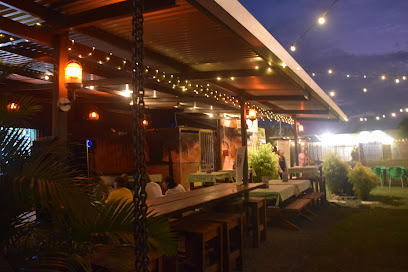
Creek Bar
Discover the charm of Creek Bar in New Caledonia, your go-to destination for refreshing drinks and stunning riverside views.

BY THE BEACH
Experience the vibrant flavors of New Caledonia at BY THE BEACH, a delightful tapas bar offering a taste of local culinary artistry.
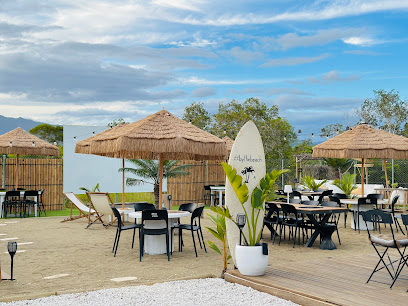
Chic'n Snack Bar Café Terrasse
Discover the flavors of New Caledonia at Chic'n Snack Bar Café Terrasse, a cozy eatery offering a delightful menu in the heart of Koumac.

L'Andaluz Bar Burger
Experience the best burgers in Koumac at L'Andaluz Bar Burger, where local ingredients meet vibrant flavors in a cozy atmosphere.

Local Phrases about Hienghene
-
- HelloBonjour
[bon-zhoor] - GoodbyeAu revoir
[oh reh-vwahr] - YesOui
[wee] - NoNon
[nohn] - Please/You're welcomeS'il vous plaît/De rien
[seel voo pleh / deh ryen] - Thank youMerci
[mehr-see] - Excuse me/SorryExcusez-moi/Désolé
[ex-kew-zay mwah / day-zo-lay] - How are you?Comment ça va?
[koh-mohn sah vah] - Fine. And you?Bien. Et vous?
[byen. ay voo] - Do you speak English?Parlez-vous anglais?
[par-lay voo ahn-glay] - I don't understandJe ne comprends pas
[zhuh nuh kohm-prahnd pah]
- HelloBonjour
-
- I'd like to see the menu, pleaseJe voudrais voir le menu, s'il vous plaît
[zhuh voo-dray vwahr luh meh-noo, seel voo pleh] - I don't eat meatJe ne mange pas de viande
[zhuh nuh mahnzh pah deh vee-and] - Cheers!Santé!
[sahn-tay] - I would like to pay, pleaseJe voudrais payer, s'il vous plaît
[zhuh voo-dray pay-ay, seel voo pleh]
- I'd like to see the menu, pleaseJe voudrais voir le menu, s'il vous plaît
-
- Help!Au secours!
[oh seh-coor] - Go away!Allez-vous en!
[ah-lay vooz ahn] - Call the Police!Appelez la police!
[ah-peh-lay lah poh-leece] - Call a doctor!Appelez un médecin!
[ah-peh-lay uh may-deh-sahn] - I'm lostJe suis perdu(e)
[zhuh swee pair-doo] - I'm illJe suis malade
[zhuh swee mah-lahd]
- Help!Au secours!
-
- I'd like to buy...Je voudrais acheter...
[zhuh voo-dray zah-shey...] - I'm just lookingJe regarde juste
[zhuh ruh-gahrd zhewst] - How much is it?Combien ça coûte?
[kohm-byen sah koot] - That's too expensiveC'est trop cher
[say troh shair] - Can you lower the price?Pouvez-vous baisser le prix?
[poo-vay voo bay-say luh pree]
- I'd like to buy...Je voudrais acheter...
-
- What time is it?Quelle heure est-il?
[kell ur ay-teel] - It's one o'clockIl est une heure
[eel ay oon ur] - Half past (10)Dix heures et demie
[deeze ur eh duh-mee] - MorningMatin
[mah-tahn] - AfternoonAprès-midi
[ah-pray mee-dee] - EveningSoir
[swahr] - YesterdayHier
[yehr] - TodayAujourd'hui
[oh-zhoor-dwee] - TomorrowDemain
[duh-mahn] - 1Un
[uh] - 2Deux
[duh] - 3Trois
[twah] - 4Quatre
[kah-truh] - 5Cinq
[sank] - 6Six
[sees] - 7Sept
[sept] - 8Huit
[weet] - 9Neuf
[nurf] - 10Dix
[dees]
- What time is it?Quelle heure est-il?
-
- Where's a/the...?Où est...?
[oo ay...] - What's the address?Quelle est l'adresse?
[kell ay lah-dress] - Can you show me (on the map)?Pouvez-vous me montrer (sur la carte)?
[poo-vay voo muh mohn-tray (soor lah kart)] - When's the next (bus)?Quand est le prochain (bus)?
[kahn ay luh proh-shahn (boos)] - A ticket (to ....)Un billet (pour ....)
[uhn bee-yay (poor)]
- Where's a/the...?Où est...?
History of Hienghene
-
The history of Hienghene dates back over 3,000 years when the Lapita people, renowned for their pottery, first settled in the area. Their arrival marked the beginning of human habitation in New Caledonia, bringing with them advanced navigational skills and a rich cultural heritage.
-
The indigenous Kanak people have inhabited Hienghene for centuries, developing a unique culture characterized by communal living, traditional fishing methods, and intricate wood carvings. The Kanak social structure is organized around clans, each with its own chief, and traditional practices continue to be a vital part of daily life.
-
In the late 18th century, European explorers, including Captain James Cook, arrived in New Caledonia. This period marked the beginning of significant cultural exchanges, as well as conflicts. The introduction of new goods, technologies, and diseases had a profound impact on the local population.
-
In 1853, New Caledonia was officially claimed by France, leading to the establishment of a penal colony. The French colonial period brought significant changes to Hienghene, including the introduction of new agricultural practices and the construction of infrastructure. However, it also led to the displacement of many Kanak people and the disruption of traditional ways of life.
-
Throughout the 20th century, Hienghene became a focal point for the Kanak independence movement. In the 1980s, tensions escalated, leading to periods of unrest and conflict. Key figures, such as Jean-Marie Tjibaou, emerged from Hienghene, advocating for the rights and sovereignty of the Kanak people. The Matignon Agreements of 1988 and the Nouméa Accord of 1998 eventually paved the way for greater autonomy.
-
Today, Hienghene is a vibrant community that celebrates its rich cultural heritage while embracing modernity. The area is known for its stunning natural landscapes, including the iconic ‘Brooding Hen’ rock formation and the cascading waterfalls. Efforts to preserve Kanak culture are evident through local festivals, traditional music, and crafts that attract visitors from around the world.
Hienghene Essentials
-
Hienghene is located on the northeast coast of New Caledonia's main island, Grande Terre. The nearest airport is Nouméa Magenta Domestic Airport, approximately 380 kilometers away. From Nouméa, you can rent a car and drive to Hienghene, which takes around 5 to 6 hours. Alternatively, you can take a domestic flight to Koumac Airport and then drive around 2 hours to Hienghene. There are also bus services and organized tours available from Nouméa to Hienghene.
-
Hienghene is a small town, and most attractions are within walking distance. For longer trips, local taxis are available but may need to be booked in advance. Renting a car is a convenient option for exploring the surrounding areas. Public buses operate within the region but are less frequent. Bicycles can also be rented for a more eco-friendly way to explore the town and its scenic routes.
-
The official currency in New Caledonia is the CFP Franc (XPF). Credit cards are accepted in some hotels, restaurants, and shops in Hienghene, but it is advisable to carry cash, especially for smaller establishments and markets. ATMs are available in Hienghene, but it is wise to withdraw sufficient cash in Nouméa before traveling to ensure you have enough funds.
-
Hienghene is generally a safe destination for tourists. However, like any travel destination, it is advisable to take standard precautions. Avoid walking alone at night in unfamiliar areas and keep an eye on your belongings in crowded places. There are no specific high-crime areas targeting tourists, but it is always best to stay vigilant and aware of your surroundings.
-
In case of emergency, dial 17 for police assistance, 18 for fire services, and 15 for medical emergencies. The local police station and medical facilities are available in Hienghene. It is recommended to have travel insurance that covers medical emergencies. For minor health issues, there are pharmacies in the town where you can purchase over-the-counter medications.
-
Fashion: Do dress modestly, especially when visiting cultural sites. Avoid wearing revealing clothing. Religion: Do respect local customs and traditions. Always remove your shoes before entering a traditional Kanak house. Public Transport: Do be respectful and give up your seat to elderly passengers. Don't eat or drink on public transport. Greetings: Do greet people with a warm smile and a handshake. A slight bow of the head is also a sign of respect. Eating & Drinking: Do try local delicacies and accept food offerings graciously. Don't refuse hospitality, as it is considered impolite.
-
To experience Hienghene like a local, visit the local markets where you can buy fresh produce and traditional Kanak crafts. Engage with locals, as they are often friendly and willing to share stories about the town's history and culture. Don't miss visiting the iconic 'La Poule' rock formation and the Lindéralique Cliffs. For a unique experience, take a boat tour to explore the beautiful lagoon and its marine life.
Trending Landmarks in Hienghene
Nearby Cities to Hienghene
-
Things To Do in Bourail
-
Things To Do in La Foa
-
Things To Do in Nouméa
-
Things To Do in Tadine
-
Things To Do in Lenakel
-
Things To Do in Isangel
-
Things To Do in Port Vila
-
Things To Do in Lamap
-
Things To Do in Lakatoro
-
Things To Do in Norsup
-
Things To Do in Luganville
-
Things To Do in Sola
-
Things To Do in Cascade
-
Things To Do in Burnt Pine
-
Things To Do in Kingston





